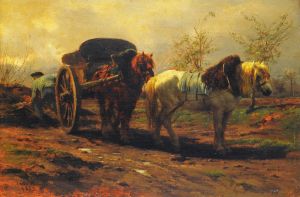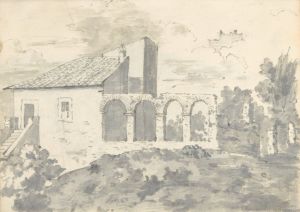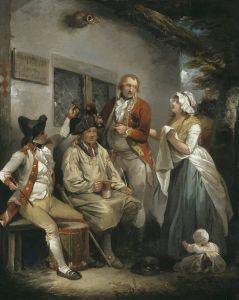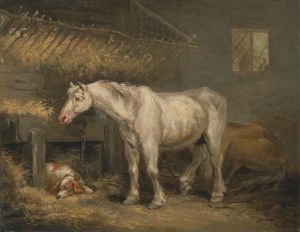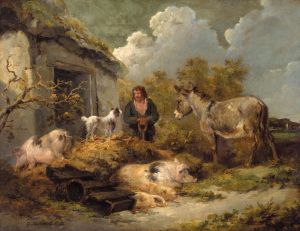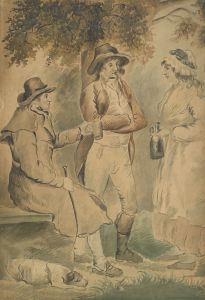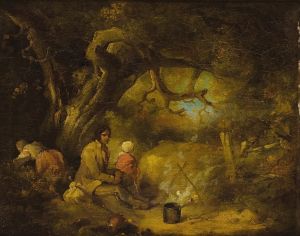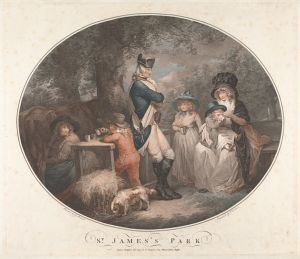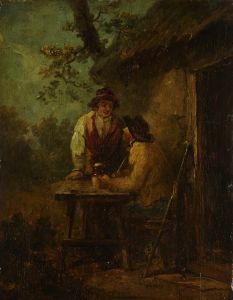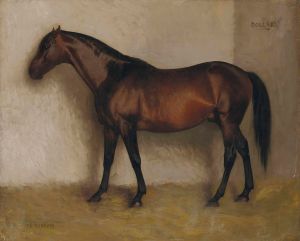
A carrier’s stable
A hand-painted replica of George Morland’s masterpiece A carrier’s stable, meticulously crafted by professional artists to capture the true essence of the original. Each piece is created with museum-quality canvas and rare mineral pigments, carefully painted by experienced artists with delicate brushstrokes and rich, layered colors to perfectly recreate the texture of the original artwork. Unlike machine-printed reproductions, this hand-painted version brings the painting to life, infused with the artist’s emotions and skill in every stroke. Whether for personal collection or home decoration, it instantly elevates the artistic atmosphere of any space.
George Morland was an English painter, born on June 26, 1763, in London, and he became one of the most significant British artists of the late 18th century. Known for his rustic and rural scenes, Morland's work often depicted the everyday life of the countryside, capturing the essence of rural England with a keen eye for detail and a deep appreciation for the natural world.
One of his notable works is "A Carrier’s Stable," which exemplifies Morland's ability to portray scenes of rural life with authenticity and charm. Although specific details about the painting's creation date and its current location are not widely documented, it is recognized as part of Morland's extensive body of work that focuses on the theme of rural and domestic life.
"A Carrier’s Stable" typically features a stable scene, which was a common subject in Morland's oeuvre. His paintings often included animals such as horses, dogs, and farm animals, depicted with a sense of realism and vitality. Morland had a unique talent for capturing the character and mood of his subjects, whether they were human or animal, and this painting is no exception.
The composition of "A Carrier’s Stable" likely includes elements that were characteristic of Morland's style: a careful arrangement of figures and animals, a warm and earthy color palette, and a focus on the interplay of light and shadow to create depth and atmosphere. Morland's attention to detail and his ability to convey the texture of fur, the sheen of a horse's coat, or the roughness of stable walls would have been evident in this work.
Morland's paintings were popular during his lifetime, and he was known for his prolific output. His works were often reproduced as prints, which helped to disseminate his images to a broader audience. Despite his success, Morland's life was marked by personal struggles, including financial difficulties and issues with alcohol, which ultimately affected his career and health.
"A Carrier’s Stable," like many of Morland's works, serves as a window into the rural life of 18th-century England, offering viewers a glimpse of the simplicity and beauty of the countryside. Morland's ability to capture the essence of his subjects with empathy and precision has ensured his place in the history of British art.
George Morland passed away on October 29, 1804, but his legacy endures through his paintings, which continue to be appreciated for their artistic merit and their portrayal of a bygone era. His work remains a valuable resource for understanding the social and cultural landscape of rural England during his time.







